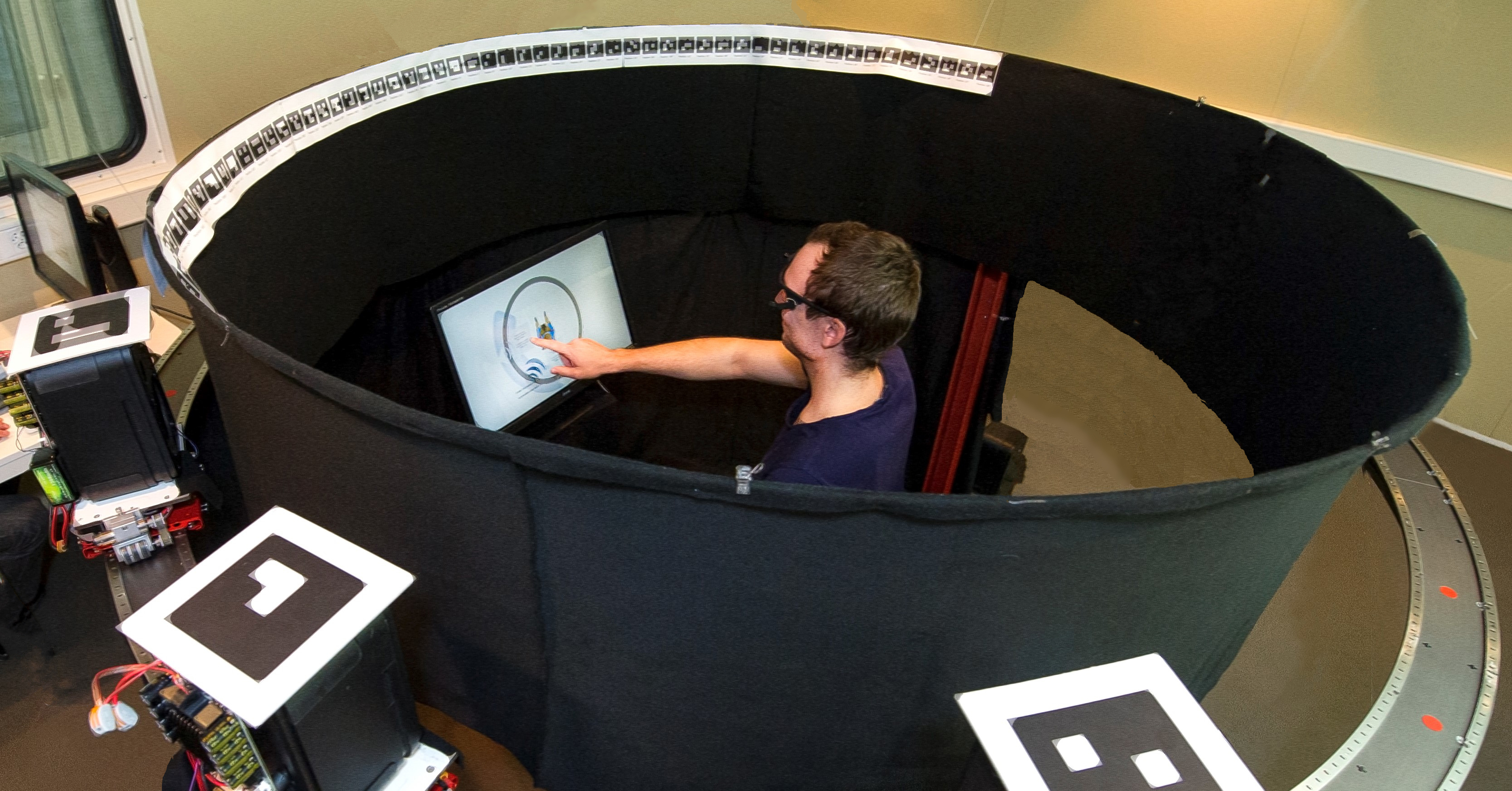2021/08/26 | Research | Surgical technologies
Spatial hearing with bilateral cochlear implant
The coding strategy of cochlear implant audio processors highly affects the hearing quality of cochlear implant (CI) users. Current coding models date back two decades and fall short of normal-hearing listeners’ ability to locate sound sources. The Hearing Research Lab (HRL) of the Inselspital and ARTORG Center has now investigated if a temporal fine structure (TFS) coding approach can improve spatial hearing for bilateral CI users.
 Robotic measurement setup during sound source discrimination assessment.
(Photo: Adrian Moser © University of Bern)
Robotic measurement setup during sound source discrimination assessment.
(Photo: Adrian Moser © University of Bern)
To assess spatial hearing, the HRL conducted experiments with 12 experienced bilateral CI users and 12 normal-hearing control subjects, including pure-tone headphone-based tests and sound field localization, discrimination, and tracking tests. The temporal fine coding approach indeed enabled the CI users to be more sensitive to time differences in arriving signals between both ears, however, the benefits were not transferred to the tests in the sound field using broadband stimuli. To further investigate this, additional experiments involving narrow-band stimuli need to be performed.
Link to the study
Hearing Research Lab